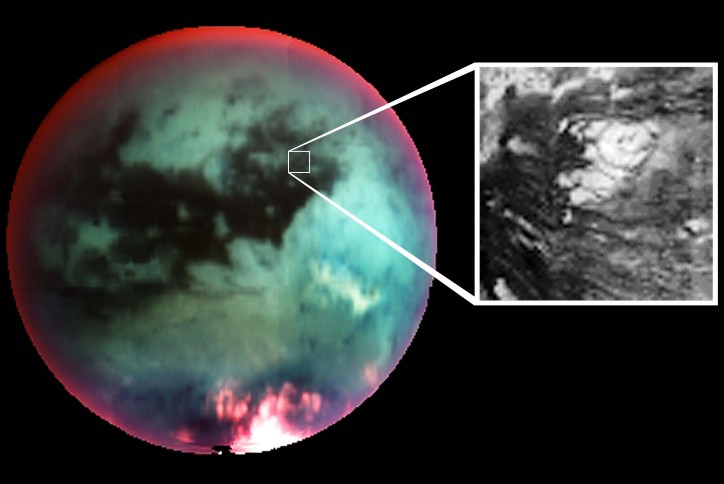Explanation: Investigators suspect the domed feature detailed above is an ice volcano, or cryovolcano, seen in infrared light through the hazy atmosphere on Saturn's moon Titan. Since Titan's surface temperature is around -180 degrees Celsius, 'lava' welling up to form the volcanic mound would be icy indeed - possibly a slurry of of methane, ammonia, and water ice combined with other ices and hydrocarbons. The circular feature is roughly thirty kilometers in diameter. If its volcanic nature is confirmed, the discovery of cryovolcanism on Titan could explain the origin of methane in Titan's atmosphere. Before the Cassini-Huygens mission to Saturn, a popular explanation for replenishing Titan's concentration of atmospheric of methane was the presence of an extensive, methane-rich, hydrocarbon sea. But Cassini's instruments and the Huygens surface probe have failed to find such a global ocean.
1999 2000 2001 2002 2003 2004 2005 2006 2007 2008 2009 2010 2011 2012 2013 2014 2015 2016 2017 2018 2019 2020 2021 2022 2023 2024 2025 |
Yanvar' Fevral' Mart Aprel' Mai Iyun' Iyul' Avgust Sentyabr' Oktyabr' Noyabr' Dekabr' |
NASA Web Site Statements, Warnings, and Disclaimers
NASA Official: Jay Norris. Specific rights apply.
A service of: LHEA at NASA / GSFC
& Michigan Tech. U.
|
Publikacii s klyuchevymi slovami:
Titan - methane - volcano - Titan - vulkan
Publikacii so slovami: Titan - methane - volcano - Titan - vulkan | |
Sm. takzhe:
Vse publikacii na tu zhe temu >> | |
